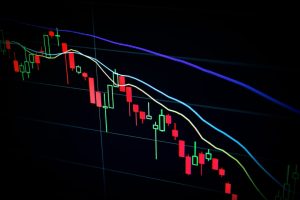Forex 2: A Beginner’s Guide to Understanding Forex Trading
Forex trading, also known as foreign exchange trading, is the buying and selling of currencies on the foreign exchange market. It is the largest and most liquid financial market in the world, with an average daily trading volume of over $6 trillion. Forex trading offers individuals the opportunity to profit from the fluctuations in currency prices, but it can be a complex and risky endeavor for beginners. In this beginner’s guide to forex trading, we will explore the basics of forex trading and provide some essential tips for getting started.
Understanding the Forex Market
The forex market is a decentralized market, meaning that it does not have a central exchange. Instead, it operates through a global network of banks, financial institutions, and individual traders. The market is open 24 hours a day, five days a week, allowing traders from all over the world to participate at any time.
Currency pairs are the primary instruments traded in the forex market. A currency pair consists of two currencies, with the first currency called the base currency and the second currency called the quote currency. The exchange rate between the two currencies represents the value of one currency relative to the other. For example, in the EUR/USD currency pair, the euro is the base currency, and the US dollar is the quote currency.
Forex Trading Terminology
Before diving into forex trading, it is essential to familiarize yourself with some common forex trading terms:
1. Pips: A pip is the smallest unit of measurement in forex trading and represents the fourth decimal place in most currency pairs. It is used to measure the change in value between two currencies.
2. Spread: The spread is the difference between the bid and ask price of a currency pair. It represents the cost of trading and is measured in pips.
3. Leverage: Leverage allows traders to control larger positions than their initial investment. It is expressed as a ratio, such as 1:100. While leverage can amplify profits, it also increases the risk of losses.
4. Margin: Margin is the amount of money required to open a position. It is a percentage of the total trade size, and it acts as a deposit to cover potential losses.
5. Stop-Loss: A stop-loss order is an order placed to close a trade at a predetermined price level. It is used to limit potential losses if the trade moves against you.
6. Take-Profit: A take-profit order is an order placed to close a trade at a predetermined price level. It is used to secure profits when the trade moves in your favor.
Getting Started with Forex Trading
Now that you have a basic understanding of the forex market and its terminology, here are some essential tips for getting started with forex trading:
1. Educate Yourself: Forex trading is a skill that requires continuous learning. Take the time to educate yourself about the forex market, trading strategies, and risk management techniques. There are numerous online resources, courses, and books available to help you develop your trading skills.
2. Open a Demo Account: Before risking real money, practice trading on a demo account. A demo account allows you to trade with virtual money in real market conditions. Use this opportunity to test different trading strategies and get familiar with the trading platform.
3. Choose a Reliable Broker: Selecting a reputable forex broker is crucial for a successful trading journey. Look for a broker that is regulated by a recognized financial authority, offers competitive spreads, has a user-friendly trading platform, and provides excellent customer support.
4. Develop a Trading Plan: A trading plan is a set of rules that guides your trading decisions. It should include your trading goals, risk tolerance, trading strategy, and money management rules. Stick to your trading plan and avoid making impulsive decisions based on emotions.
5. Manage Your Risk: Risk management is essential in forex trading. Only risk a small percentage of your trading capital on each trade to protect yourself from significant losses. Implement stop-loss orders to limit potential losses and use take-profit orders to secure profits.
6. Start Small: Begin with small trade sizes and gradually increase your position sizes as you gain experience and confidence. Avoid the temptation to overtrade or chase after quick profits. Patience and discipline are key qualities of successful forex traders.
Conclusion
Forex trading can be a rewarding endeavor for those willing to put in the time and effort to understand the market and develop their trading skills. With the right education, a reliable broker, and a well-defined trading plan, beginners can navigate the forex market and potentially profit from currency price fluctuations. Remember to approach forex trading with caution and never risk more than you can afford to lose. Good luck on your forex trading journey!





